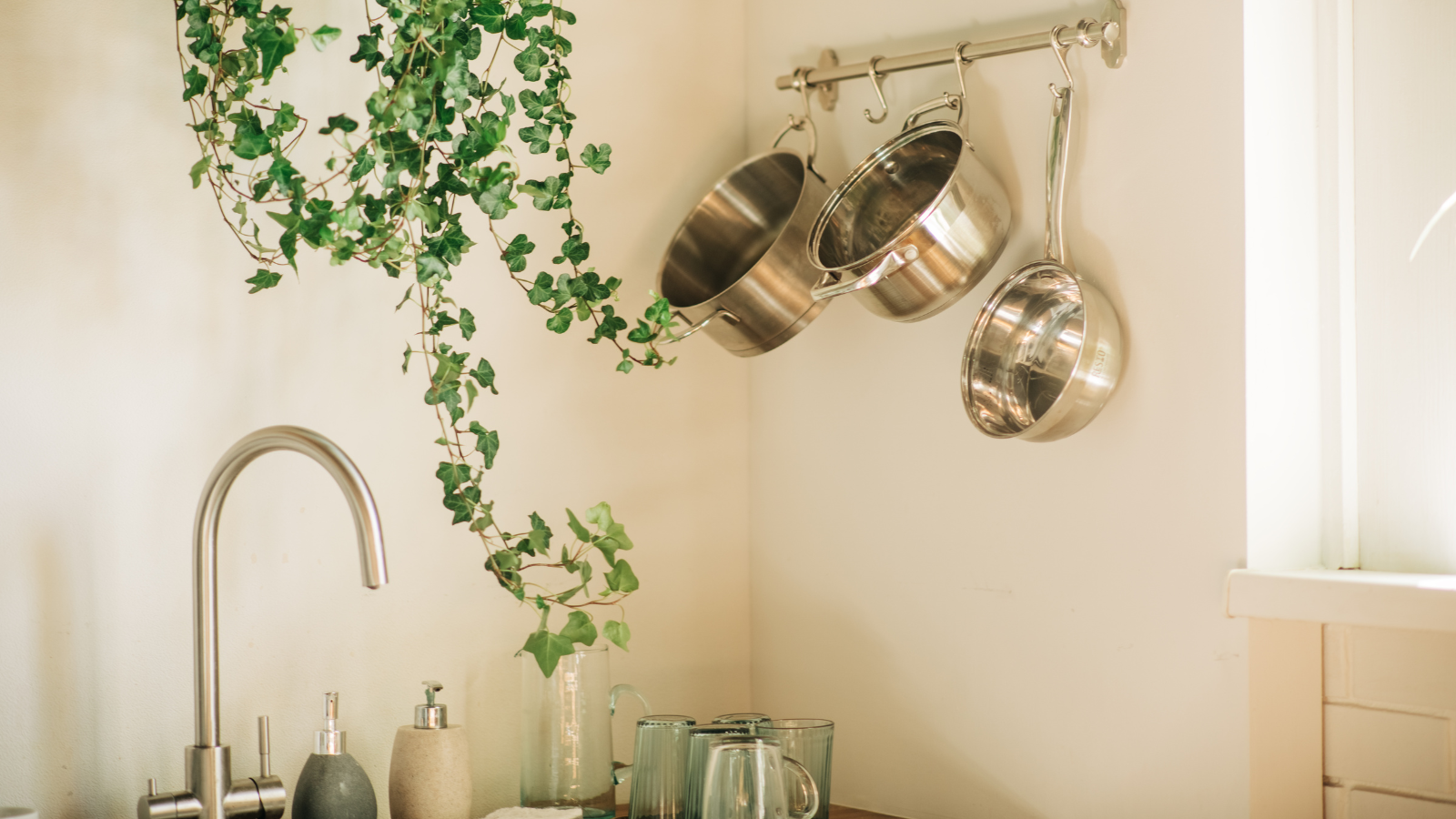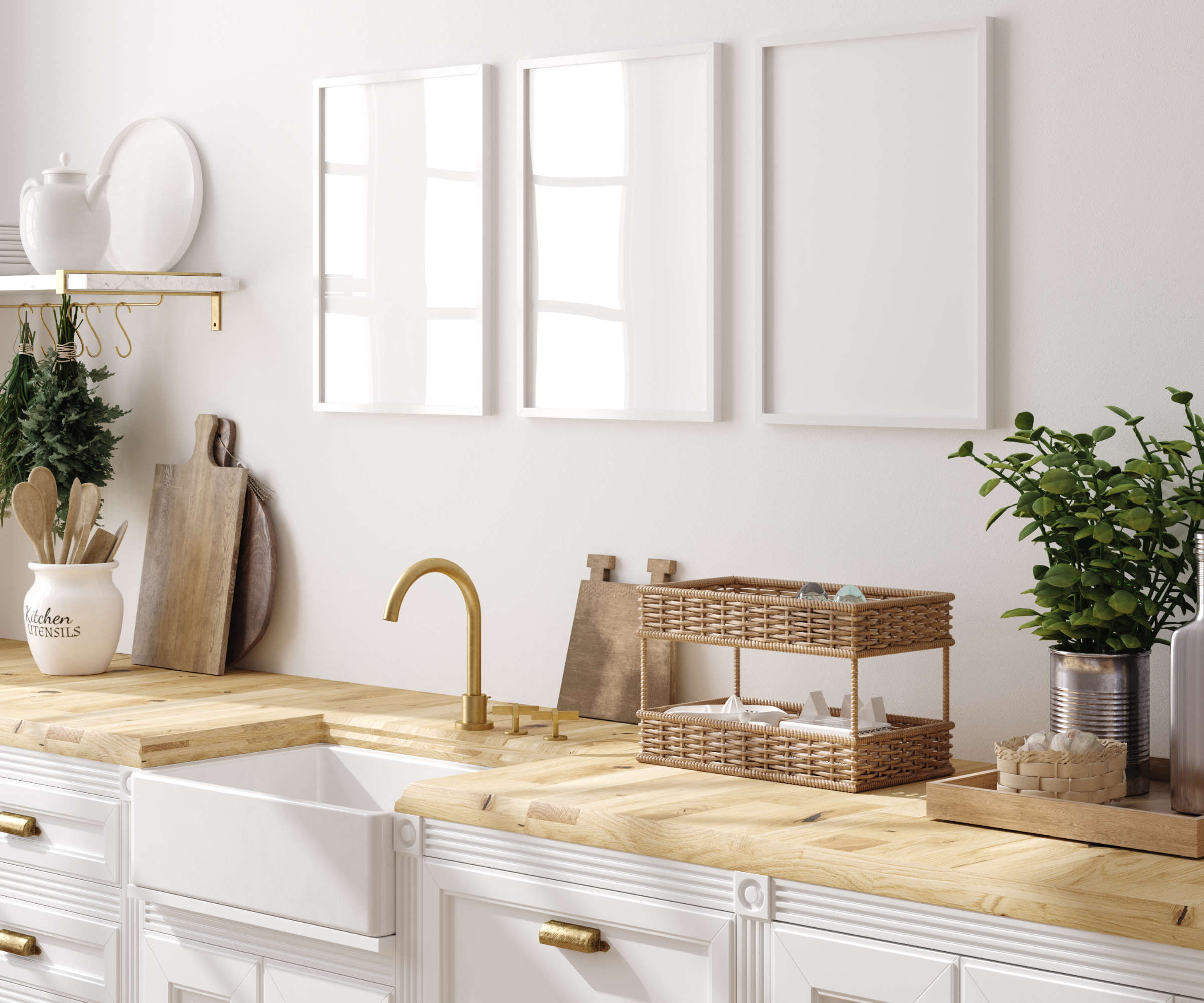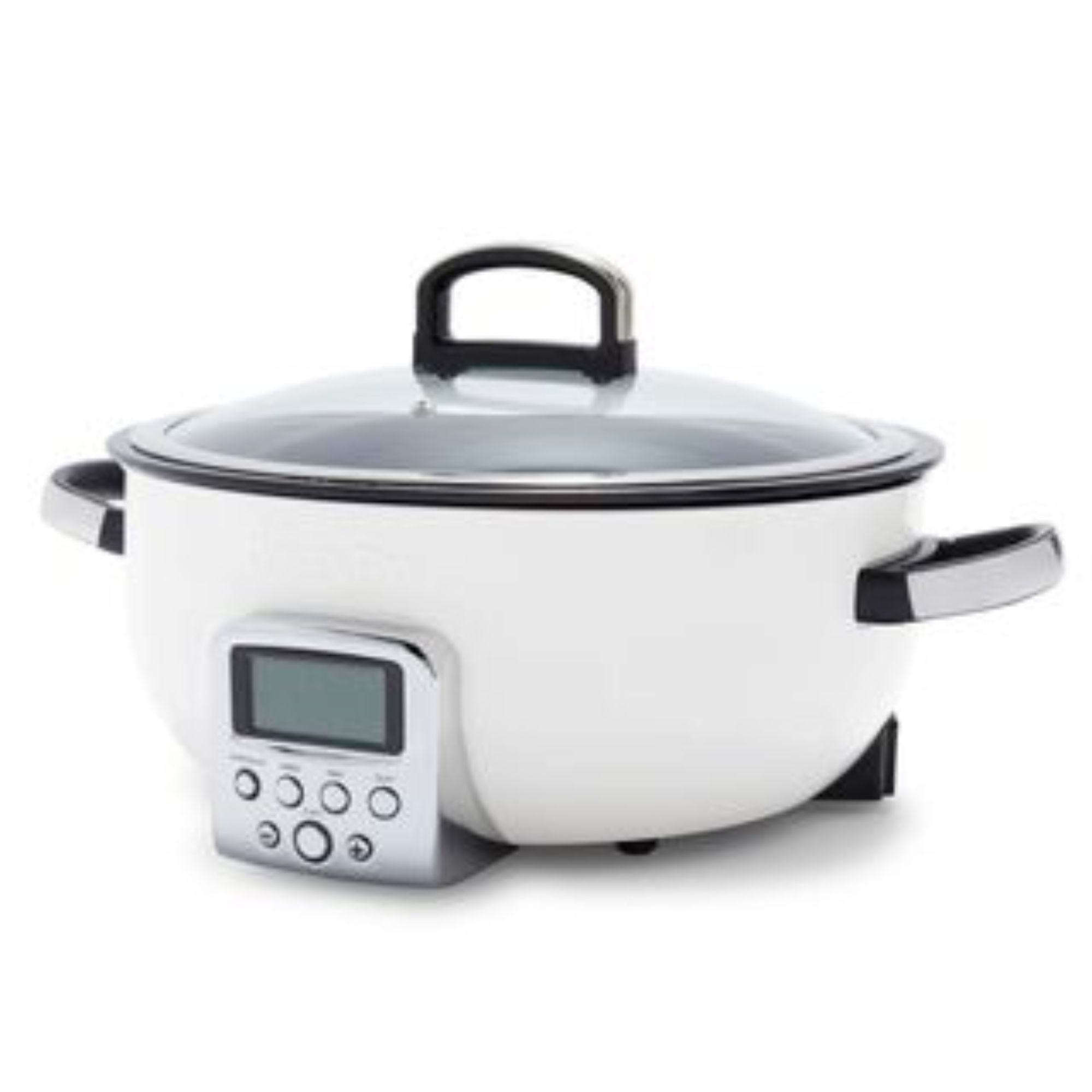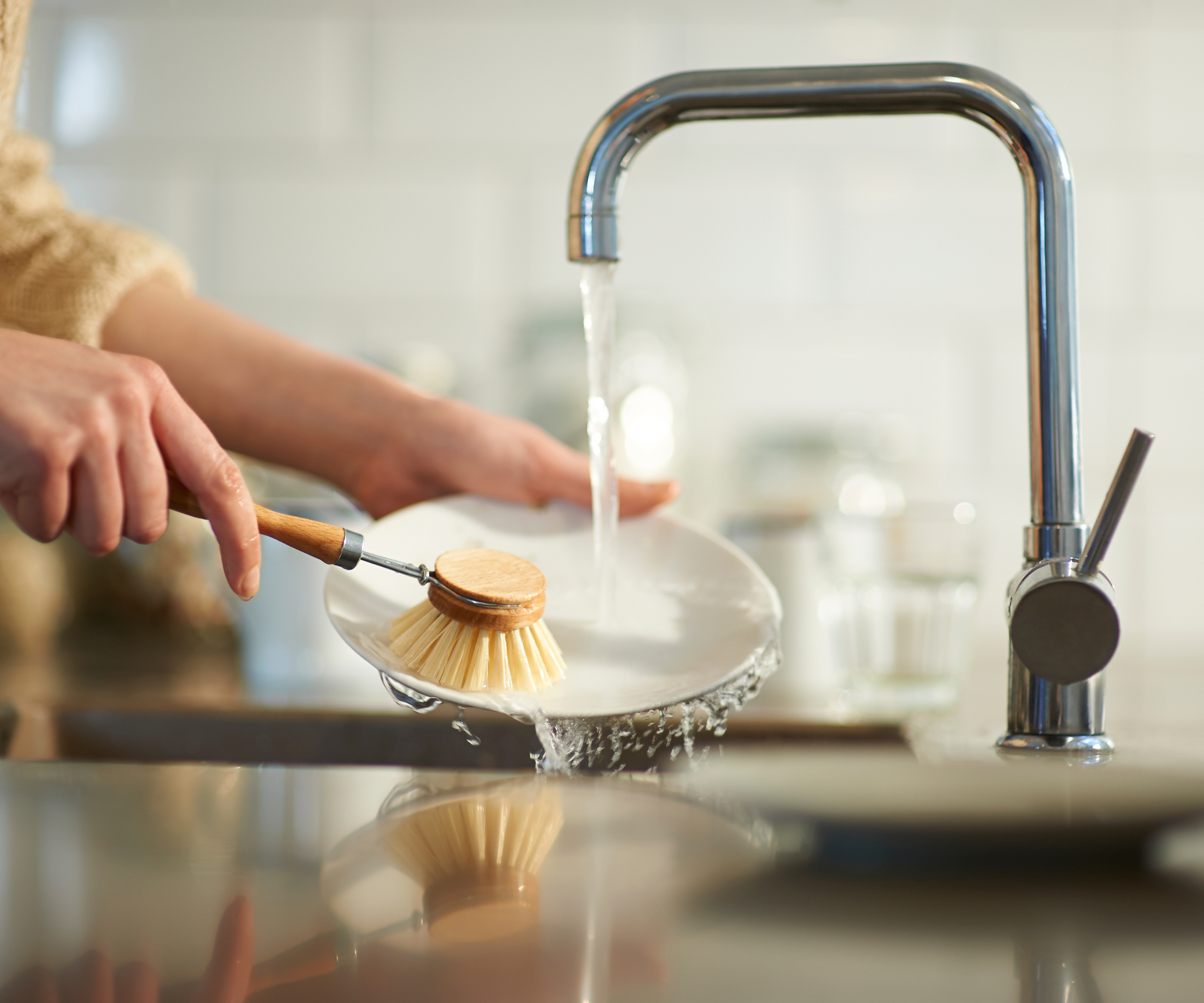What does 'non-toxic' cookware really mean? We asked the experts
'Toxin-free' cookware has become a buzzword, but what does it actually mean? We investigated, so you can shop smarter


In recent years, we’ve seen ‘non-toxic’ ‘labels pop up on everything from candles and kettles to coffee machines and non-toxic air fryers.
Put simply, non-toxic cookware is designed to be safe to cook and eat from. In most cases, non-toxic products are certified by regulatory bodies, who test them for potentially harmful chemicals and ensure they meet specific safety standards.
So, what are the chemicals we want to avoid? And how can we choose the best kitchenware to make our homes less toxic? I spoke to the experts (and the world-leading, non-toxic homeware brands) to get to the clean truth.
What are PFAS chemicals?
When kitchenware brands talk about ‘toxins’, they’re usually referring to PFAS. First used in the 1940s, PFAS are chemicals that resist grease, oil, water, and heat. These chemicals are super stubborn, so they’re often found in products designed to be stain-resistant, clean, and dry (like cookware, cleaning products, and carpets).
It's widely assumed that PFAS can last centuries without biodegrading, which is why they’re nicknamed ‘forever chemicals.’ This raises concerns about their toxic effects on the environment and human health.
The FDA says, 'Exposure to certain PFAS types has been linked to significant health issues, such as increased cholesterol, high blood pressure, developmental effects, reduced immune response, altered liver function, and increased cancer risk.'
Most of the FDA’s research focuses on PFOA and PFOS, but there are thousands of PFAS chemicals with varying structures and properties, and their health impacts remain largely unknown. Addressing this knowledge gap is a key research priority.

Is non-stick cookware safe?
Historically, perfluorooctanoic acid (PFOA) was used to create non-stick coating. PFOA has since been linked to various health issues, including cancer, liver damage, and developmental problems. It has now been phased out of production in many countries (including the United States).
These days, the majority of non-stick cookware is labeled ‘PFOA-free’ and the non-stick coating itself (widely known by the brand name Teflon) is generally considered safe when used properly. However, Pam Hartnett (Nutritionist and Public Health expert) warns that, ‘Damaged or overheated non-stick coating can cause toxins to be released into the air and food’.
Dennis Littley (a fine-dining chef with over 40 years experience in the kitchen) provides more detail: 'Teflon-coated pans can start to break down and release fumes at temperatures above 500°F (260°C).'
To cook safely, it's essential to use non-stick equipment within the recommended temperature range. You should also avoid damaging your nonstick appliances, like air fryer baskets or frying pans with metal utensils or abrasive cleaning tools.
If the non-stick coating is visibly worn, scratched, or peeling, it's time to replace your kit. Personally, I’d toss out any non-stick pots or pans that have been in the cupboard for over three years, just to be on the safe side.

Pam Hartnett MPH, RDN, owns The Vitality Dieticians. She is a Registered Dietician Nutritionist with a Masters in Public Health and a Certificate in Functional Nutrition. She has years of experience teaching nutrition, providing nutrition counseling, and implementing large-scale public health interventions to improve disease outcomes. She has contributed to US News Health Magazine, Forbes, Eating Well, and SHEFinds.
What is toxin-free cookware?
Stainless steel cookware is not only beautiful. It's also considered to be one of the best non-toxic cookware available. It doesn’t contain harmful chemicals and it's very resistant to scratches and high temperatures.
Brands like OurPlace have also developed technology like Thermakind™ - a ceramic nonstick coating that's free from PFAS (including PTFEs and PFOAs), lead and cadmium. “We believe that these chemicals should never have been in the kitchen,’ says Our Place founder, Shiza Shahid.
GreenPan is another future-thinking brand, who have created high-quality bakeware and electric kitchen appliances with PFAS-free non-stick coatings. Our kitchen appliance testers are particularly fond of the GreenPan Elite 6 Quart Slow Cooker. An excellent choice for health-conscious cooks.

This slow cooker is totally free from PFAS, PFOA, lead, and cadmium, so you know you're eating cleaner, healthier meals.
Read our full review here.
Non toxic terms to look out for when shopping
- PFOA & PFOS-Free
- FDA Approved Cookware
- Thermakind™ Ceramic Non-Stick Coating
- Thermolon™ Ceramic Non-Stick Coating
- High-Quality Stainless Steel

Are air fryers toxic?
When used as intended and properly maintained, we’ve been assured by medical experts, scientific papers, and air fryer companies that these appliances are considered safe and non-toxic. They’re still a much healthier alternative to deep fryers. It’s important to choose a model made with safe materials and to maintain it well. Again, if the non-stick is peeling, stop using it.
Are coffee makers toxic?
Most of the best coffee makers are crafted from glass or stainless steel, which don't pose any concerns to experts. However, questions arise when these materials are replaced with lighter, cheaper plastics.
Our resident barista, Laura, spoke with Kelly Johnson-Arbor, a medical toxicology physician. She said, 'Plastics used in coffee makers can contain potentially dangerous chemicals, including BPA and PFAS.' To minimize risk, Kelly suggests avoiding coffee makers with plastic components altogether. If you are concerned about plastic exposure, opt for coffee makers made entirely of glass or stainless steel. Laura has rounded up the best non-toxic coffee makers, all tried and tested.
Final thoughts
It's easy to get overwhelmed by words like 'toxins', but the expert guidance seems pretty simple. As long as you're caring for your kitchen equipment correctly, cooking at the recommended temperatures, and choosing high-quality, time-tested materials, you can easily create a non-toxic kitchen.
FAQS
Is copper cookware non-toxic?
Copper cookware looks timeless in the kitchen. Luckily, it's safe and non-toxic when properly lined with materials like stainless steel or tin. The lining prevents copper from reacting with acidic foods, which can otherwise be toxic. Regular maintenance, careful cleaning and cooking practices are necessary to keep the lining intact.
How do I stop my non-stick from peeling?
Be as gentle as possible when using your non-stick appliances. Use wooden or silicone utensils with non-stick materials and be wary of abrasive sponges and cloths. Wash them gently using warm, soapy water.
What is the best non toxic air fryer?
In our expert guide to the best non-toxic air fryers, the Instant Pot Duo Crisp was the overall winner. Featuring stainless steel, it combines air frying with pressure cooking and much more. If you're looking for a ceramic air fryer, the Ninja Max XL is super speedy and effective.
Sign up to the Homes & Gardens newsletter
Design expertise in your inbox – from inspiring decorating ideas and beautiful celebrity homes to practical gardening advice and shopping round-ups.

Lydia is the Kitchen Appliances Editor for Homes & Gardens, testing everything from air fryers and mixers to juicers and coffee machines. She trained in Culinary Arts at Leiths School of Food & Wine and previously served as the Recipe Editor for Mindful Chef.
-
 Everyone is obsessed with vintage tiles right now – bring the nostalgic charm of this classic design feature into your home with our 5 design ideas
Everyone is obsessed with vintage tiles right now – bring the nostalgic charm of this classic design feature into your home with our 5 design ideasHonor the past with our favorite ways to decorate with vintage tiles, as suggested by interior design experts
By Eleanor Richardson Published
-
 'It's a fast reset button' – using the 1, 2 ,3 ,4, 5 decluttering method cleared my persistent mess in seconds
'It's a fast reset button' – using the 1, 2 ,3 ,4, 5 decluttering method cleared my persistent mess in secondsIt's easy, effective and so quick to do
By Ottilie Blackhall Published